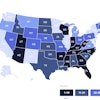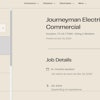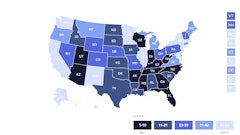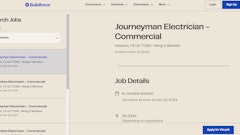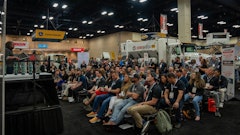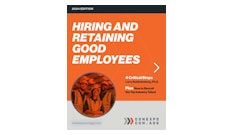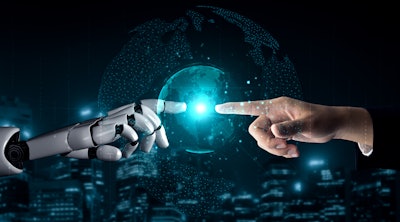
To help meet consumer demand and strategic business goals, today’s companies are increasingly turning to an external workforce of consultants, freelancers and more that offer specialized skills. This diversification of the workforce comes at a time when businesses are also looking for new ways to capitalize on technology like AI.
In fact, a recent Economist Impact report suggests that AI’s rise may continue this shift toward a larger external workforce, as organizations seek to stay ahead in the competitive landscape. This trend is not only reshaping the composition of the workforce but highlighting how companies can leverage generative AI to enable increased ROI from the workforce.
We’re already seeing AI being embedded into sourcing, as well as addressing the compliance challenges of a growing external workforce. Now, as AI continues to advance, its integration into business processes is not just an option but a strategic imperative that will help future-proof onboarding.
Simplifying Today’s Increasingly Complex Workforce
The simple fact is that companies are increasingly relying on external workforces. But it remains to be seen if they have the tools to manage both this talent and internal employees properly.
Research from Deloitte indicates that the composition of the workforce is becoming so complex that leaders are realizing their current systems are not up to the challenge of bridging the gap between internal and external contributors. Improving the management of these resources could not only streamline core functions like payroll but also empower business leaders to explore strategies that account for future disruptions, increases in capacity or cost reduction.
To do so, executives must demonstrate an increased level of agility and collaboration, specifically, between the HR and procurement functions. Previous approaches to the external workforce have left procurement and HR operating in silos, limiting not only the full view of the workforce, but the value that can be realized.
Organizations should look to integrate the tools that enable seamless collaboration and real-time visibility. Advanced technologies like AI and data analytics can help ensure that procurement and HR are operating in lockstep, and that all temporary workers align with broader strategic goals, whether that is to solve a short-term business problem or improve an existing skills gap.
The Right Information Leads to the Right Talent
As more businesses use external talent, they’re still confronted with the challenge of identifying and selecting good candidates. The current process is tedious, time-consuming and prone to unconscious biases. Companies need a reliable and efficient way to engage these external workers.
For instance, during the hiring process, companies can leverage AI-powered resume ranking to help hiring managers quickly find the ideal candidate for a job. This approach can sift through submitted files to strip out personally identifiable information (PII) and list the candidates based on who has the necessary skills and experience for the position. If a manager has hundreds of resumes to review, they can easily identify the applicants who align with the requirements. This helps identify the best-suited candidates more quickly, while also introducing a more seamless process for rehire eligibility.
On the other side, the immense amount of data that will be created within the entire external workforce supply chain can deliver tremendous value. For example, when inflation increased dramatically in 2023, many companies saw a jump in the requests for rate increases from external workers. Many struggled to identify areas to limit costs, failing to understand how data could be leveraged to analyze trends and effectively negotiate.
Instead, constructive and fact-based discussions with suppliers could’ve led to cost rate evolution reports and shared inflation impact KPIs. Harnessing this data could’ve increased executive trust into the global contingent workforce’s ability to deliver productivity.
With a unified view of their subcontractor network, companies can make quicker, more informed hiring decisions and seamlessly manage internal and external workers.
How Generative AI Can Transform the Talent Environment
Getting new suppliers in the door is not easy. It can be slowed down by the simplest hangup, including unclear project descriptions. Research shows 88% of job postings have descriptions with less than 100 characters, meaning that hiring managers are not communicating job requirements clearly to suppliers. This increases confusion and often leads to more back-and-forth.
A top goal for hiring managers is to put the right skills in the right place. Generative AI can make that possible by drafting better, more comprehensive work descriptions that help identify candidates that match their needs earlier in the process. These postings can then be translated by AI, allowing regional partners to more quickly find high-quality candidates.
When it comes to removing biases from the process, AI can remove personal information, so candidates are compared solely based on their qualifications and quickly highlight key skills listed in CVs—cutting down the time that hiring managers take to review applications.
AI is shaping not just how companies work, but how they build and manage their workforce around the world. To stay competitive in today’s business environment, business leaders would be wise to change their mindset on AI to be less of a luxury and more of a mandate.

